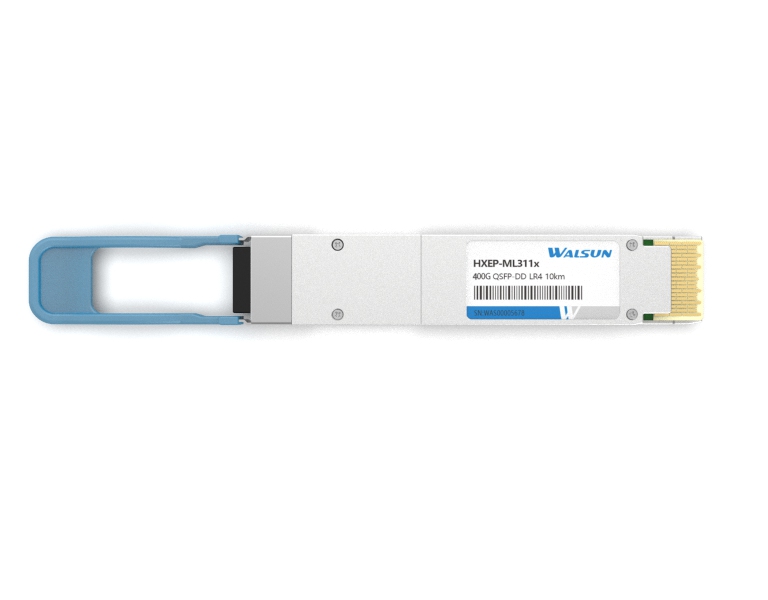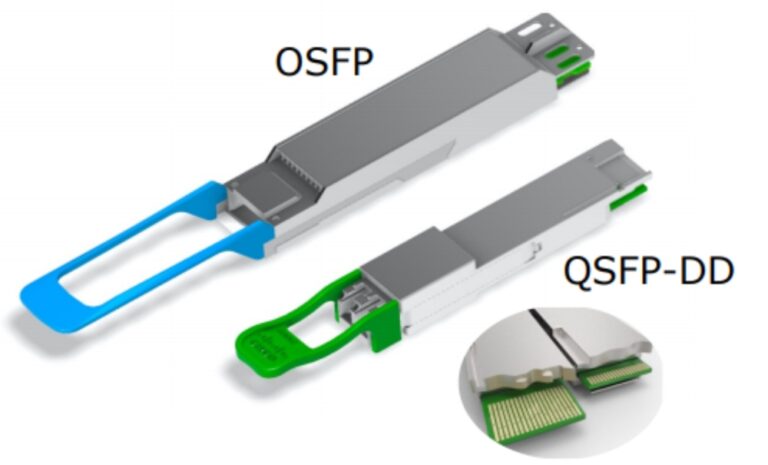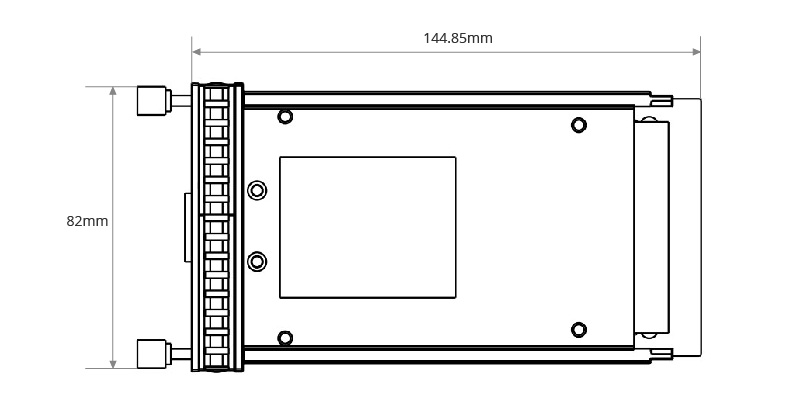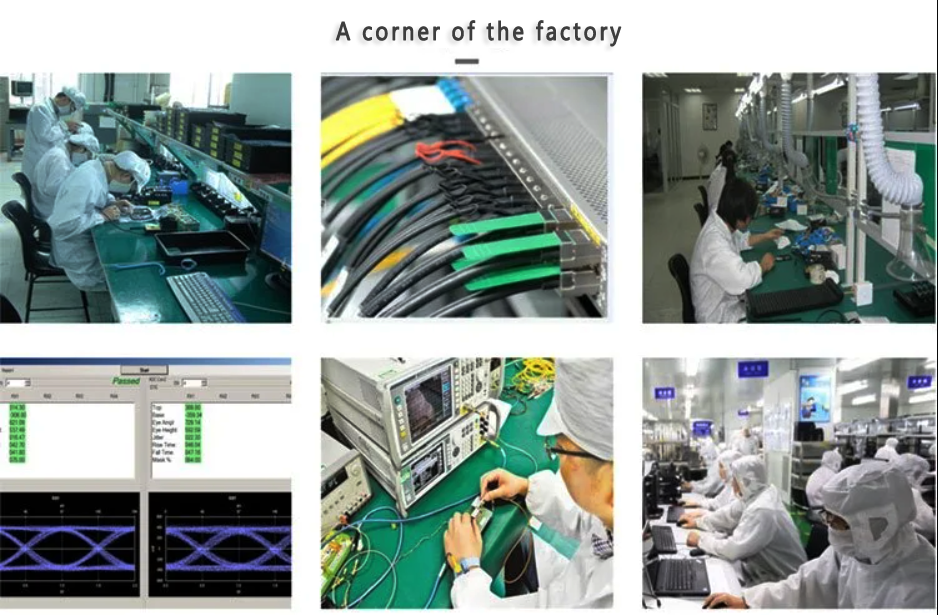

 Knowledge Base +
Knowledge Base +  2023.11.29
2023.11.29SFP (Small Form-factor Pluggable) and SFP+ (Enhanced Small Form-factor Pluggable) are both compact optical transceiver modules used for data communication and networking.

SFP28 is an enhanced version of the SFP+ module, with a higher data transfer rate.
QSFP+ (Quad Small Form-factor Pluggable) and QSFP28 are high-speed, compact, hot-pluggable transceiver modules commonly used for high-density networking applications.
QSFP-DD (Quad Small Form-factor Pluggable Double Density) is an enhanced version of the QSFP+ module, with higher data transfer rates and increased port density.
The main differences between these modules lie in their data transfer rates, port densities, and form factors, with each subsequent generation offering increased performance and capabilities.
How do they compare?
SFP and SFP+: SFP is for 100BASE or 1000BASE applications while SFP+ is used in 10GBASE applications. SFP+ ports can accept SFP optics but at a reduced speed of 1 Gb/s, but an SFP+ transceiver cannot be plugged into an SFP port.
SFP+ and SFP28: SFP28 is designed for use with 25GBASE connections. SFP+ and SFP28 have the same form factor, and compatible pinouts. SFP28 transceivers will work with SFP+ optics but at a reduced speed of 10 Gb/s.
QSFP and QSFP+: QSFP carries 4 x 1 Gb/s channels. QSFP+ supports 4 x 10 Gb/s channels and the channels can be combined into a single 409 Gb/s connection. A single QSFP+ can replace 4 SFP+ transceivers resulting in greater port density.
QSFP-DD, QSFP28, and QSFP56: QSFP-DD transceivers have the physical dimensions and same port densities as the QSFP, QSFP28, and QSFP56 but double the number of lanes to eight. QSFP-DD modules are available that support 400 Gb/s and 800 Gb/s. To accommodate the greater number of lanes, the mechanical interface of QSFP-DD on the host board is slightly deeper than that of the other QSFP transceivers to support an additional row of contacts.
What's OSFP?
OSFP has 8 lanes in two different configurations, 50 Gb/s per lane for a total of 400 Gb/s and 100 Gb/s per lane for a total of 800 Gb/s. It is larger than QSFP-DD and measures 22.58 x 107.8 x and 13.0 mm compared with 18.35 x 89.4 x 8.5 mm for QSFP-DD. A 1U front panel can accommodate up to 36 OSFP ports for a total of 14.4Tb/s. There are currently three single-mode fiber implementations that can support distances up to 2 km and three multi-mode fiber implementations that support distances up to 10 km. Since QSFP-DD modules are smaller their thermal capacity is only 7 to 12 watts. The larger OSFP transceivers have a thermal capacity of 12 W to 15 W (Figure 1).

Figure 1. OSFP uses a larger module with more thermal capacity compared with QSFP-
40G QSFP+ Transceiver Wiki
What Is QSFP+ Module?
As the evolution of QSFP (quad small form-factor pluggable), the QSFP+ module is a compact, hot-pluggable transceiver used for 40Gbps speed. It is compliant with SFF-8436 and QSFP Multi-source Agreement (MSA). There are 4 independent 10Gbps data lanes in each direction to support 40Gbps aggregate bandwidth. QSFP+ has been widely used in 40GBASE-X Ethernet, breakout to 10GBASE-X Ethernet, data center aggregation and backplane applications, and datacom switch and router connections. The following figure illustrates the QSFP+ dimensions.
40G QSFP+ vs 40G CFP: What's the Difference?
What Is 40G CFP?
CFP, short for C form-factor pluggable, is compliant with MSA to produce a common form-factor for the transmission of high-speed digital signals. This standard was primarily designed for 100 Gigabit Ethernet systems, but it can also support 40GbE. There are three main types of 40G CFP modules, 40GBASE-SR4 CFP is applied for 150m transmission on OM4 MMF with MTP connectors; 40GBASE-LR4 CFP is designed for 10km transmission on SMF with SC duplex connectors and 40GBASE-FR CFP is used for 2 km transmission on SMF with SC duplex connectors. The following figure illustrates the CFP dimensions.

CFP mechanical dimensions
What Is the Difference Between QSFP+ and CFP?
First, a CFP module is quite large in size visually, which would not support stacking or ganging but with a higher pricing. The interface of a CFP module is MTP or SC duplex, which is different from the MTP or LC interface of the QSFP+ module as well. Besides, 40G CFP modules have relatively limited types, so they can't satisfy users' diversified demands for different distances. In a word, QSFP+ is smaller in size and relatively inexpensive with higher flexibility and wider application compared with 40G CFP.


Subscribe to the newsletter
for all the latest updates.
2-5# Building, Tongfuyu Industrial Zone, Aiqun Road, Shiyan Street, Baoan District, Shenzhen. China
